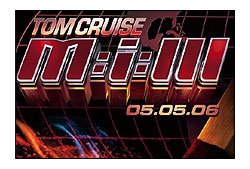 On June 9, the 2006 FIFA World Cup Soccer tournament will start.
On June 9, the 2006 FIFA World Cup Soccer tournament will start.The World Cup is a quadrennial event that thrives on high-octane international rivalries.
The last one in 2002 was watched by 28 billion fans worldwide, which makes it bigger than the Olympics or the Super Bowl.
The upcoming event will take place in Germany and is expected to be followed by 32 billion fans worldwide.
Needless to say, it offers wonderful marketing opportunities, both nationally and globally.
Since soccer (or European football) is not popular in the US, American brands are mainly targeting the 42m Hispanics domestically, who have $800 billion of spending power.
The FIFA World Cup™ is the most effective international marketing platform, reaching millions of people in over 200 countries throughout the world.
FIFA offers partners and sponsors a comprehensive marketing package, such as:
use of the Official Marks; exposure in and around the stadium; direct advertising and promotional opportunities and preferential access to FIFA World Cup™ broadcast advertising; use the official logo and create “artmarks” (new designs based jointly upon the official logo and their specific product category) and composite logos.
This year’s sponsors (who had to pay up to $200 for the privilege) include several global brands, such as Philips, McDonalds, Coca-Cola, MasterCard, Budweiser, Nike, and Adidas.
A famous soccer trainer once said: “soccer is war”, but it pales compared to the clash of the two sportswear giants Adidas and Nike.
This marketing battle is the most costly in soccer history, with Adidas spending around $226m and Nike an estimated $113m.
The German Adidas Group is the official sponsor of the World Cup and is profiling itself like no sponsor ever did before.
Adidas made sure that its sponsorship includes blocking Nike from TV advertising in the U.S. for all 64 games.
Its CEO Herbert Hainer made the Adidas position clear:
“Our three-stripes logo will be everywhere.
For two years, we have had more than 100 people in a separate building working on the World Cup. We have set ourselves aggressive targets.”
Adidas’ financial target is to reach at least $1.56bn in football related sales this year.
But the real goal is clear: get archrival Nike, especially on Adidas’ home turf Germany.
Currently, there is not such a wide gap between the two giants.
Adidas has a market share of 28% (not including the US market) compared to Nike’s 31%.
In the US, Nike is still the leader, but Adidas is gaining ground in the American baseball and basketball market.
The only market where Adidas surpasses Nike is Japan, where Adidas sponsored the Japan national team in the 2002 World Cup and launched its innovative lightweight, thin-soled adiZero sneaker that hit the spot with Asian consumers.
Adidas is currently growing faster than Nike in other Asian markets, especially China, where it spent $80 million to be the exclusive sneaker sponsor of the 2008 Beijing Summer Olympics.
Adidas also changed its advertising and followed Nike’s lead with cinematic, edgy ads such as the World Cup campaign and spots featuring superstar David Beckham created by BWA\Chiat\Day.
Over the next few months, Adidas will spend about $200 million to market all things soccer, including shoes, boots, national team jerseys and soccer balls.
Its ad campaign, dubbed +10, revolves around the idea that one player plus 10 others equals a team.
Nike isn't about to concede any market share to archrival Adidas.
It is fortifying its market leadership in basketball and running gear and has the goal to be the No. 1 soccer brand in the world, according to its president Charlie Denson.
Since soccer is a wonderful way to build brand loyalty with children worldwide, Nike is targeting its audience the viral and digital way.
Nike teamed up with Google to create the world's first social network for soccer fans: www.joga.com.

This site was launched on March 15 and will rollout in 14 languages covering 140 countries and is a replica of the American top social network website www.MySpace.com.
It enables soccer-mad fans to commune with each other over their favorite players and teams, download videos, and create discussion groups.
The branding is clever - campaign and website are named after the Brazilian phrase "joga bonito," or "play beautifully."
Fans who join Joga.com or visit Nike's site can sift through layers of video clips, messages, and ads involving Nike's star players as well as watch videos about the magic of soccer in different nations.
Fans can then download the clips to their iPods, computers, wireless phones, or portable PlayStations.
Finding out who will be the next world soccer champion might be interesting, but for me, the highlight is the Adidas vs. Nike game!

